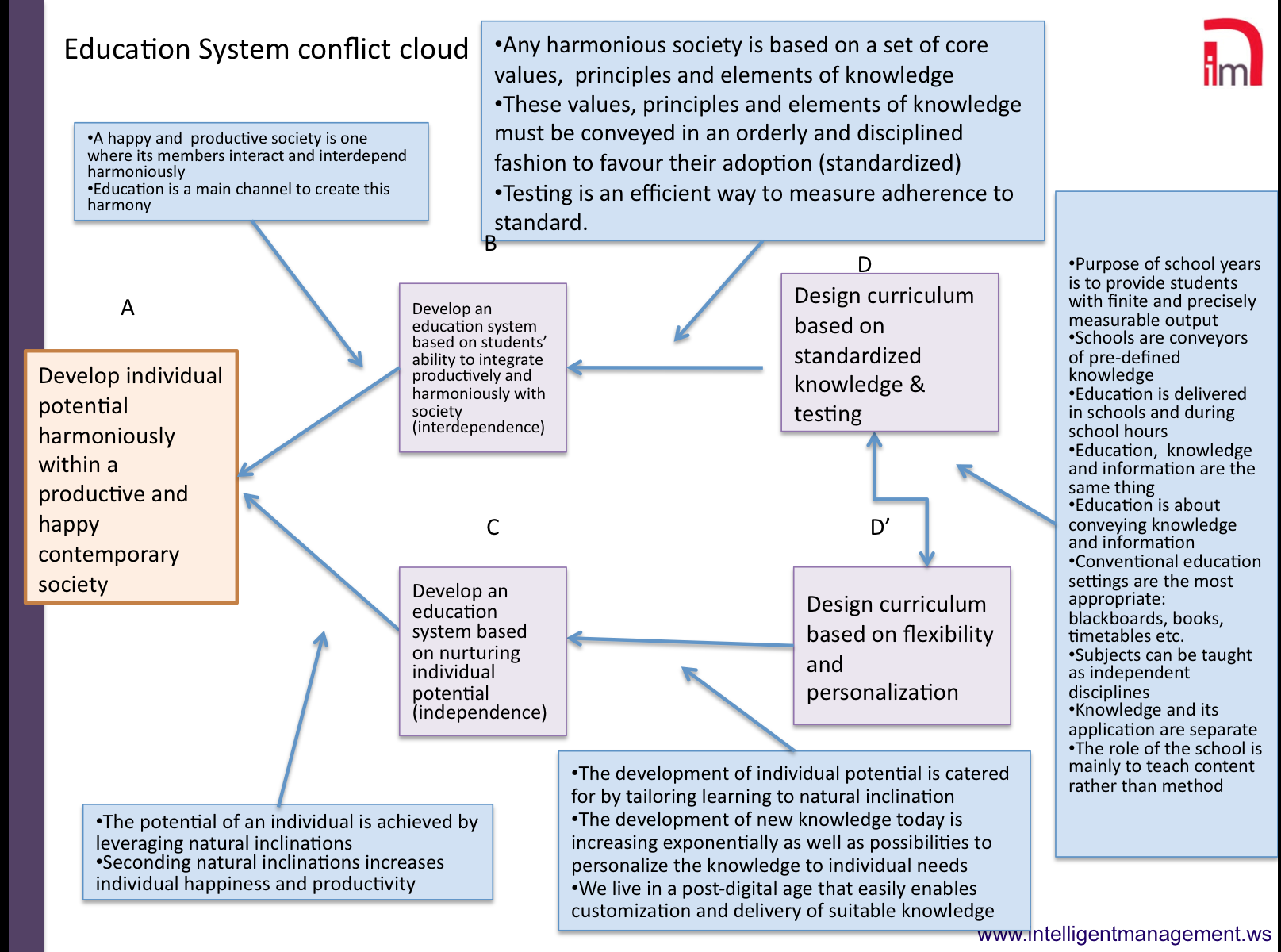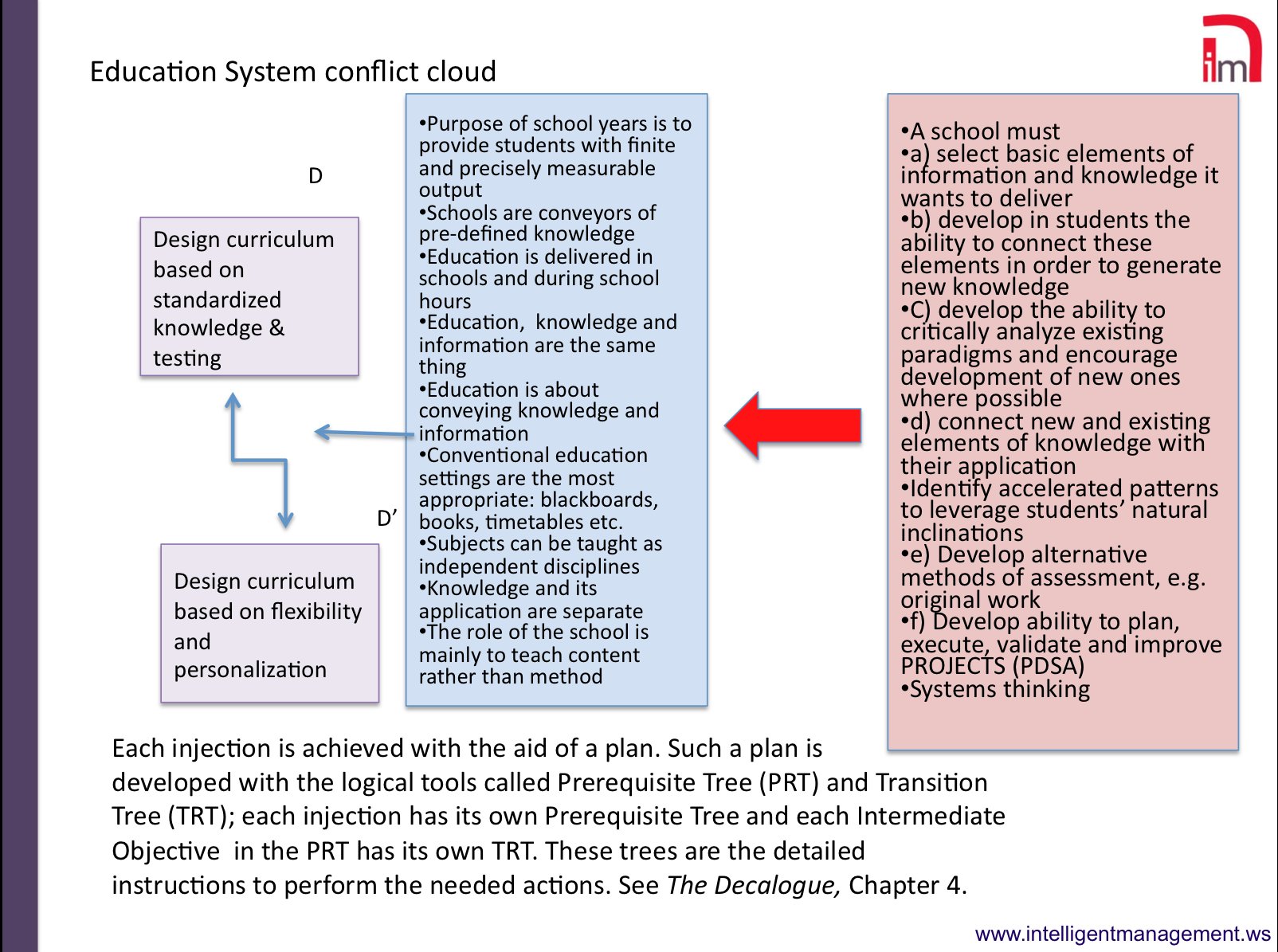 In this post we will be looking at what we consider to be the Core Conflict regarding Education and Innovation. We have analyzed this conflict using a rigorous tool that combines intuition with logical analysis to produce a solution that is a non-linear synthesis. This Thinking Process Tool is known as the Core Conflict Cloud from the Theory of Constraints.
In this post we will be looking at what we consider to be the Core Conflict regarding Education and Innovation. We have analyzed this conflict using a rigorous tool that combines intuition with logical analysis to produce a solution that is a non-linear synthesis. This Thinking Process Tool is known as the Core Conflict Cloud from the Theory of Constraints.
In the previous posts, Prof. Pagano highlighted the challenges facing educators today regarding innovation. Students may appear to be less engaged in their conventional studies. This may be connected to the remarkable advances in technology that have transformed our daily lives but that have not yet permeated the school environment, practices and curricula.
The Systemic paradigm
We are experiencing a radical shift in our understanding of nature from a mechanistic worldview to one that is ecological or systemic. Understanding and acting appropriately and effectively within this new paradigm requires an ability to think and act systemically. The current crises and lack of thorough solutions are a dramatic demonstration of how we are lagging behind in our ability to cope with reality as systemic, interconnected and totally immersed in interdependencies. Our reality is made up of networks of networks. This requires, quite simply, a new way of thinking, understanding and acting, and nowhere is this more relevant than in our schools.
What are schools for?
Schools have the task of forming young people to become productive members of society and this requires innovation. We believe it is fair to state that the goal of our education system is to develop individual potential harmoniously within a productive and happy contemporary society. In order to achieve this goal, we need to develop an education system based on students’ ability to integrate productively and harmoniously with society. On the the other hand, to achieve the goal we need to develop an education system based on nurturing individual potential. The first need for integration leads us to want to:
Design a curriculum based on standardized knowledge and testing
whereas the second need for nurturing individual potential leads us to want to:
Design a curriculum based on flexibility and personalization
And this conflict keeps us stuck when it comes to making the reforms our education systems so desperately need.
Out of the conflict
How can we emerge from this impasse? Whereas our needs must always be respected, the conflicting positions are the result of a set of mental models, in other words, assumptions. Once we are willing to invalidate certain assumptions, we open up the pathway to a breakthrough solution.
The following diagram shows the formal representation of the Conflict Cloud. The orange box A contains the goal, boxes B and C contain the needs, and D and D’ are the conflicting positions. The blue boxes contain the assumptions.

Once we have verbalized the assumptions that keep us stuck between D and D’, we can look for ways to invalidate those assumptions with solutions. These solutions are referred to in the Theory of Constraints as ‘injections’ and they can be found in the pink box below.

Later in the week we will look at those solutions in more detail.
Related posts:
Educating for Complexity: How Do We Transform Schools into Centres of Innovation?
Innovation and Education: The School of Evolution
Reality is Not Made Up of Cycles but Complexity: Education and Innovation Pt. 2
Looking at the Core Conflict in Education and Innovation Today (Pt. 3)





Leave a Reply